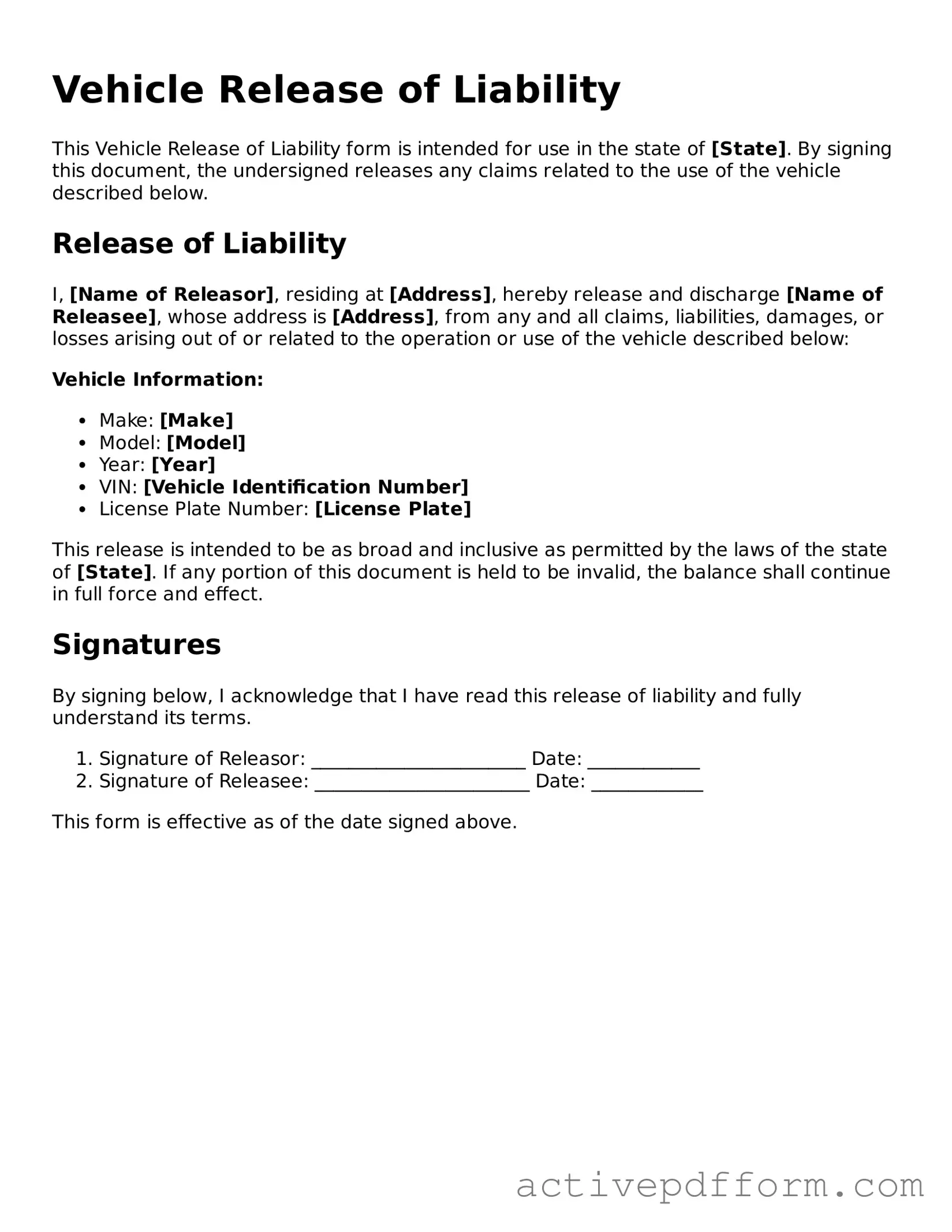What is a Vehicle Release of Liability form?
A Vehicle Release of Liability form is a legal document that protects vehicle owners from being held responsible for damages or injuries that occur after they have sold or transferred their vehicle. By signing this form, the new owner acknowledges that they take full responsibility for the vehicle once the transfer is complete.
Why do I need a Vehicle Release of Liability form?
This form is essential for safeguarding yourself against potential claims. If the new owner gets into an accident or incurs fines, you may be held liable if you do not have a signed release. It serves as proof that you no longer own the vehicle and that the new owner has accepted responsibility.
How do I complete the Vehicle Release of Liability form?
To complete the form, fill in your name, address, and the details of the vehicle, including the make, model, and VIN. Both the seller and the buyer should sign and date the document. Ensure that all information is accurate to avoid any future disputes.
Where do I submit the Vehicle Release of Liability form?
Typically, you should submit the form to your local Department of Motor Vehicles (DMV) or the equivalent agency in your state. Some states may allow you to submit it online, while others may require you to mail it or deliver it in person.
Is the Vehicle Release of Liability form required by law?
While not all states require this form by law, it is highly recommended. Some states do mandate it for the protection of both parties involved in the vehicle transfer. Always check your state’s regulations to ensure compliance.
What happens if I don’t use a Vehicle Release of Liability form?
If you skip this step, you risk being held liable for any incidents that occur with the vehicle after the sale. This could lead to financial and legal troubles, including lawsuits or claims against you for damages or injuries.
Can I use a Vehicle Release of Liability form for any vehicle?
Yes, you can use this form for any type of vehicle, including cars, trucks, motorcycles, and trailers. Just make sure that all relevant details are included to ensure that the release is valid.
How long should I keep a copy of the Vehicle Release of Liability form?
It’s advisable to keep a copy of the signed form for at least a few years. This will provide you with proof of the transaction and the release of liability should any issues arise in the future.
